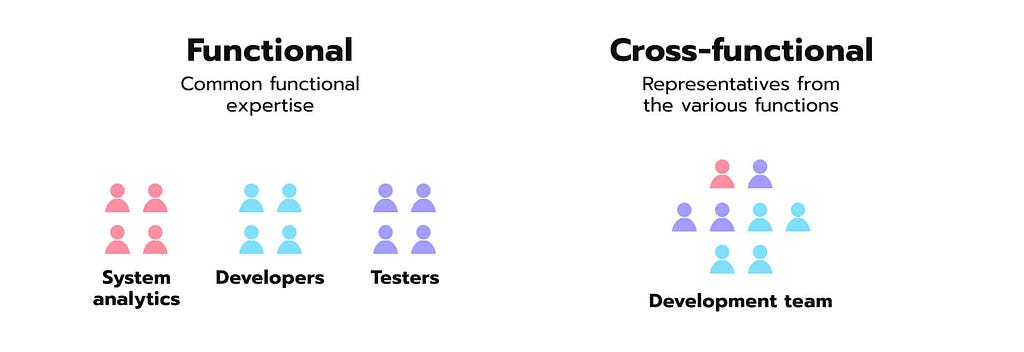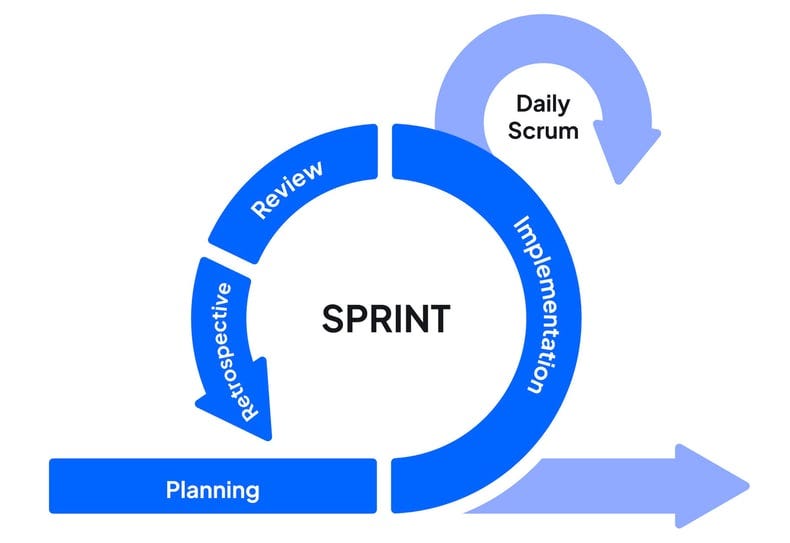Can we define a universal design process that will work great for every project? The answer is (likely) no. But it’s possible to define a process that will help streamline the design process and maximize its outcome.
A combination of Design Thinking, Lean UX, and Agile methodologies offers a powerful approach to product development — it helps balance user-centered design with efficient concept validation and iterative product development.

User-Centered Foundation (Design Thinking)
Design Thinking is a user-centered approach to problem-solving and innovation that emphasizes understanding the needs of users, generating creative solutions, testing and refining those solutions through prototyping and feedback.
Begin by understanding the needs, emotions, and problems of the end-users. Start by conducting user research to identify and understand user needs.

Gather insights through direct interaction with users (e.g., through interviews, surveys, etc.). Spend time understanding users’ behavior, focusing on “why” rather than “what” they do.

After gathering research, prioritize the most critical user insights to guide your design focus. Create a 2×2 matrix to prioritize insights based on impact (high vs low business impact) and feasibility (easy vs hard to implement).

Begin brainstorming potential solutions based on these prioritized insights and formulate a hypothesis. Encourage cross-functional collaboration during brainstorming sessions to generate diverse ideas.

Hypothesis-Driven Testing (Lean UX)
Lean UX is an approach to user experience design that focuses on rapid experimentation, collaboration, and continuous learning. It combines principles from Lean Startup with user-centered design practices. Lean UX aims to deliver user value quickly and efficiently by working iteratively and involving the entire team in the design process.
Lean UX helps quickly validate key assumptions. It fits perfectly between Design Thinking’s ideation and Agile’s development processes, ensuring that critical hypothesis are validated with users before actual development started.
Formulate a testable hypothesis around a potential solution that addresses the user needs uncovered in the Design Thinking phase.

Conduct experiment — develop a Minimum Viable Product to test the hypothesis. Build just enough functionality to test your hypothesis — focus on speed and simplicity.

Based on the experiment’s outcome, refine or revise the hypothesis and repeat the cycle.
Iterative Development (Agile)
Originally created for software development, Agile is now widely used across various industries to deliver projects efficiently and respond quickly to changes in requirements or market conditions.
Once the Lean UX process produces validated concepts, Agile takes over for incremental development. Agile’s iterative sprints will help you continuously build, test, and refine the concept. Agile complements Lean UX by providing the structure for frequent releases, allowing teams to adapt and deliver value consistently.
Break down work into small, manageable chunks that can be delivered iteratively.

Continue building and testing your product through iterative sprints. Keep the user feedback loop tight by involving users in sprint reviews or testing sessions.

Gather user feedback after each sprint and adapt the product according to the findings. Measure user satisfaction and track usability metrics to ensure improvements align with user needs.
Want To Master Product Design?
Try Interaction Design Foundation. It offers online design courses that cover the entire spectrum of product design, from foundational to advanced level.
This post contains affiliate link(s)
Design Thinking + Lean UX + Agile = ❤️ was originally published in UX Planet on Medium, where people are continuing the conversation by highlighting and responding to this story.